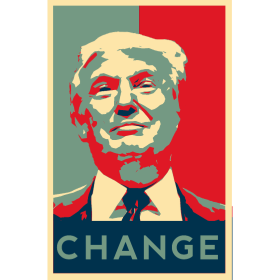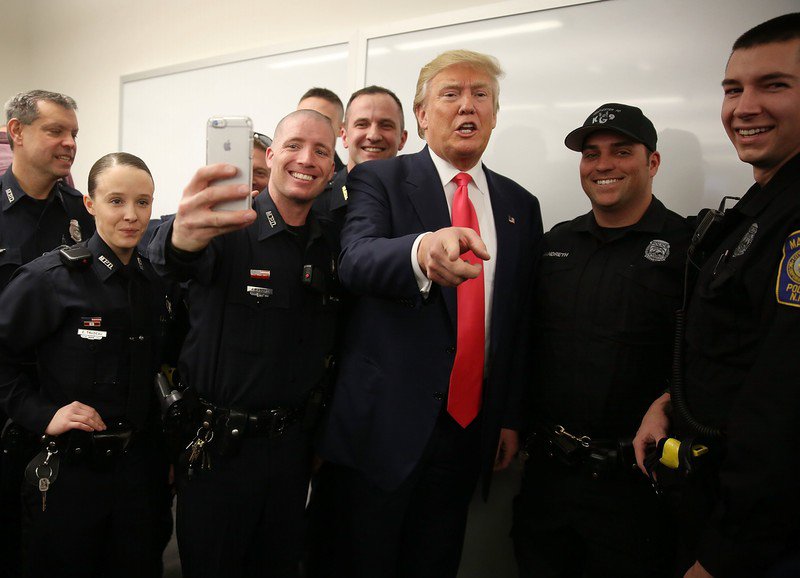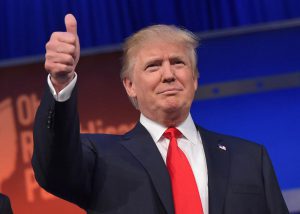 After the shooting in Charlotte that happened recently, North Carolina has been the location of many speeches regarding the second amendment and law and order. Recently, Donald Trump hosted a rally in Wilmington, North Carolina where he gave a speech about the second amendment, in which he used the phrase “restore law and order” three times in three sentences. Trump used short, persuasive messages to convince the people that he is the law and order candidate who will do what it takes to restore law and order to the country. Trump relied on using short sentences that would capture the attention of the audience. He used repetition to convey the idea that if he is elected into office, he truly will do what he says he will: restore law and order. He has effectively labeled himself the “law and order” candidate, but he has done little to explain what he will do if he is elected into office besides “restore law and order.”
After the shooting in Charlotte that happened recently, North Carolina has been the location of many speeches regarding the second amendment and law and order. Recently, Donald Trump hosted a rally in Wilmington, North Carolina where he gave a speech about the second amendment, in which he used the phrase “restore law and order” three times in three sentences. Trump used short, persuasive messages to convince the people that he is the law and order candidate who will do what it takes to restore law and order to the country. Trump relied on using short sentences that would capture the attention of the audience. He used repetition to convey the idea that if he is elected into office, he truly will do what he says he will: restore law and order. He has effectively labeled himself the “law and order” candidate, but he has done little to explain what he will do if he is elected into office besides “restore law and order.”
In his speech, Trump began making statements about restoring order and how he will make changes with the police, but he failed to actually say what he would do. Trump could barely finish his thought when he said, “And the police are going to be careful and they’re going to be studied and they’re going to be — but we have to restore law and order.” Although he failed to back up his statements with evidence, Trump passionately declared that he would restore law and order to America. Trump said, “What happened in Dallas, where all of those people were shot down. Absolutely, absolutely for no reason. Viciously shot down, and so many others.” He tapped into the audience’s anxiety by referencing other shootings that have happened in America, and set himself up as the candidate for change. Rhetorically, Trump shaped his message and delivered it in a way that was exciting for the audience and made them feel that if he was elected, he really would do something to change the current state of America.
http://time.com/4445813/donald-trump-second-amendment-speech/


 Presidential candidates tend to take a political stance or position in order to obtain more support from constituents than the opposition party. Law and order has been a topic that has been used by candidates to target minority populations. Presidential candidate, Donald Trump, has been forced into a balancing position regarding his stance on law and order. One of Trump’s largest endorsers is the police union. Therefore, when Trump has to address situations of violence, especially in regards to the recent shootings of African Americans, Trump has to be careful. If he pushes too far to one side, he risks stepping on toes of endorsers or voters. Unfortunately, one of Trump’s qualities is not delicacy. Trump tends to speak what is on his mind, and he has had a hard time obtaining the African American votes he needs, while supporting the police.
Presidential candidates tend to take a political stance or position in order to obtain more support from constituents than the opposition party. Law and order has been a topic that has been used by candidates to target minority populations. Presidential candidate, Donald Trump, has been forced into a balancing position regarding his stance on law and order. One of Trump’s largest endorsers is the police union. Therefore, when Trump has to address situations of violence, especially in regards to the recent shootings of African Americans, Trump has to be careful. If he pushes too far to one side, he risks stepping on toes of endorsers or voters. Unfortunately, one of Trump’s qualities is not delicacy. Trump tends to speak what is on his mind, and he has had a hard time obtaining the African American votes he needs, while supporting the police.
